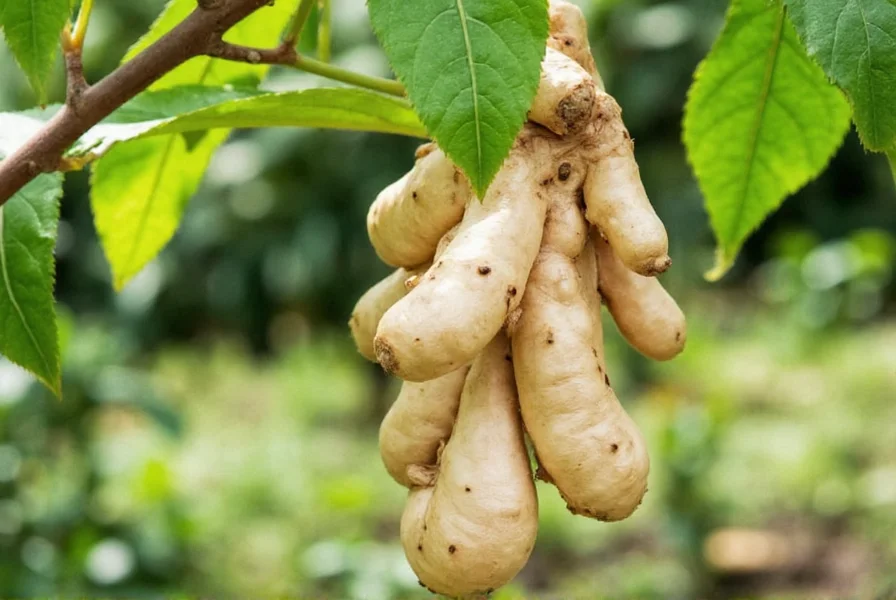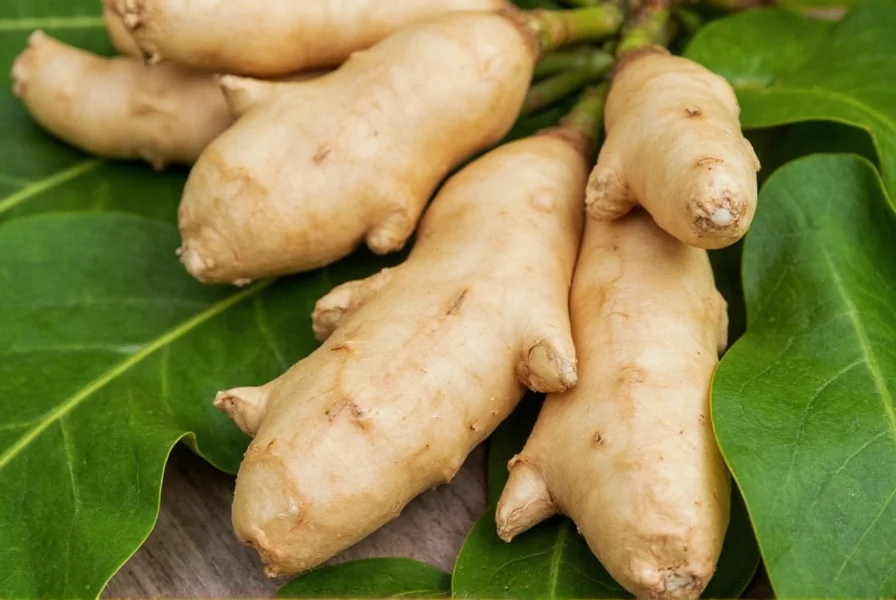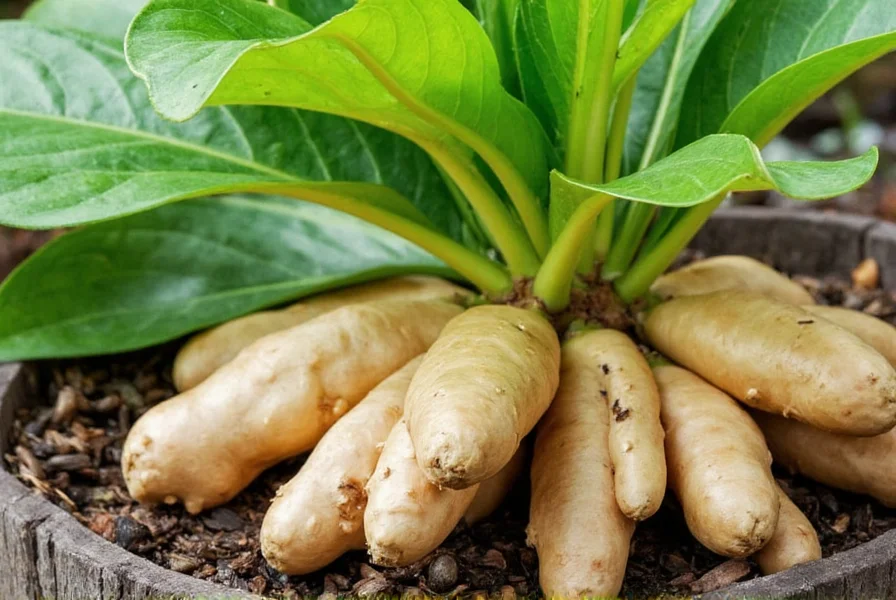Understanding the precise environmental requirements for ginger cultivation is essential for both home gardeners and commercial growers. This tropical perennial plant (Zingiber officinale) originated in Southeast Asia and thrives under specific conditions that mimic its natural habitat. When these conditions are met, ginger develops robust rhizomes with superior flavor and medicinal properties.
Essential Climate Requirements for Ginger Growth
Ginger is a tropical plant that requires consistent warmth throughout its growing season. The ideal temperature range for ginger root development spans from 71-95°F (22-35°C). Temperatures below 50°F (10°C) will stunt growth, while prolonged exposure to temperatures above 95°F (35°C) can cause rhizome rot. The optimal temperature for ginger root formation specifically falls between 77-86°F (25-30°C).
Humidity plays a crucial role in ginger cultivation, with ideal relative humidity levels between 70-80%. In drier climates, regular misting or strategic planting in naturally humid microclimates can compensate for lower ambient humidity. Ginger requires approximately 6-8 months of warm, humid conditions to produce mature rhizomes suitable for harvest.

Soil Composition and Preparation
The soil requirements for successful ginger cultivation are specific and critical to plant health. Ginger thrives in loose, well-draining loamy soil rich in organic matter. Heavy clay soils retain too much moisture and lead to rhizome rot, while sandy soils drain too quickly and require more frequent watering and fertilization.
| Soil Characteristic | Optimal Range | Effects of Deviation |
|---|---|---|
| pH Level | 5.5-6.5 (slightly acidic) | Alkaline soil reduces nutrient availability; extremely acidic soil harms root development |
| Organic Matter | 30-50% compost content | Insufficient organic matter leads to poor moisture retention and nutrient deficiency |
| Drainage Rate | 1-2 inches per hour | Poor drainage causes rhizome rot; excessive drainage requires frequent watering |
Before planting, amend the soil with generous amounts of well-rotted compost or aged manure. A 3-4 inch layer worked into the top 8-12 inches of soil provides the ideal foundation. Raised beds 6-8 inches high improve drainage in areas with heavy rainfall or naturally dense soil.
Watering Requirements and Techniques
Consistent moisture is critical for ginger root development, but the plant cannot tolerate waterlogged conditions. During active growth (spring through summer), ginger requires 1-1.5 inches of water per week. The soil should remain moist to a depth of 6-8 inches but never saturated.
Watering frequency depends on climate and soil type. In hot, dry conditions, you may need to water every 2-3 days, while cooler, humid climates might require watering only once weekly. The best time to water ginger is early morning, allowing foliage to dry before evening and reducing disease risk. As harvest approaches (typically 9-10 months after planting), gradually reduce watering to encourage rhizome maturation.
Light Requirements for Optimal Ginger Growth
Ginger grows best in partial shade conditions, receiving 2-5 hours of morning sunlight with protection from intense afternoon sun. In its natural habitat, ginger grows as an understory plant beneath forest canopy, making direct, harsh sunlight detrimental to healthy growth.
For home gardeners, ideal planting locations include:
- East-facing slopes that receive gentle morning sun
- Beneath fruit trees with dappled shade
- Areas with 30-50% shade cloth protection
- North side of buildings in southern hemisphere locations
Complete shade will result in weak, spindly growth with minimal rhizome development, while full sun exposure can scorch leaves and damage developing rhizomes. The optimal light condition for ginger root production is filtered sunlight throughout the day.
Planting Techniques for Maximum Yield
Successful ginger cultivation begins with proper planting techniques. Select fresh, plump rhizomes with multiple growth buds (eyes) from a reputable source. Soak rhizomes in water for 24 hours before planting to stimulate growth.
Plant ginger rhizomes 2-4 inches deep with the growth buds facing upward. Space individual rhizomes 8-12 inches apart in rows 18-24 inches apart. In cooler climates, start ginger indoors 4-6 weeks before the last frost date, then transplant outdoors when soil temperatures consistently exceed 68°F (20°C).
Mulching with 2-3 inches of straw or shredded leaves helps maintain consistent soil moisture and temperature while suppressing weeds. Replenish mulch as needed throughout the growing season.

Regional Growing Considerations
Ginger can be successfully cultivated in various climate zones with appropriate adaptations:
- Tropical regions (USDA zones 9-12): Can be grown year-round as a perennial. Plant at the beginning of the rainy season for optimal results.
- Temperate regions (USDA zones 6-8): Grow as an annual during warm months. Start indoors and harvest before first frost.
- Cooler climates (USDA zones 3-5): Best grown in containers that can be moved indoors during colder months.
- Arid regions: Requires additional irrigation and shade protection to maintain necessary humidity levels.
Container growing offers flexibility for gardeners in less-than-ideal climates. Use pots at least 12 inches deep with excellent drainage. A mix of 60% potting soil and 40% compost provides ideal conditions. Move containers to sheltered locations during temperature extremes.
Common Growing Challenges and Solutions
Even with optimal conditions, ginger growers may encounter several challenges:
- Rhizome rot: Caused by overwatering or poor drainage. Solution: Improve soil drainage and reduce watering frequency.
- Leaf spot diseases: Fungal infections appearing as brown spots on leaves. Solution: Remove affected leaves and improve air circulation.
- Root knot nematodes: Microscopic worms damaging root system. Solution: Rotate crops and amend soil with neem cake.
- Poor rhizome development: Often due to insufficient nutrients or improper light. Solution: Apply balanced organic fertilizer and adjust light exposure.
Regular monitoring and prompt intervention can prevent most issues from becoming serious problems. Avoid chemical pesticides when possible, as ginger is often used for culinary and medicinal purposes.
Harvesting and Post-Harvest Care
Ginger is typically ready for harvest 8-10 months after planting, when the leaves begin to yellow and die back. For mature rhizomes with maximum flavor and medicinal compounds, wait until 10 months. For "green" or young ginger with thinner skin and milder flavor, harvest at 6-7 months.
To harvest, carefully dig around the plant base and lift the entire rhizome cluster. Allow harvested ginger to cure in a shaded, well-ventilated area for 3-5 days before storage. Properly cured ginger can be stored in a cool, dark place for 2-3 weeks, or in a refrigerator for up to 3 months.











 浙公网安备
33010002000092号
浙公网安备
33010002000092号 浙B2-20120091-4
浙B2-20120091-4